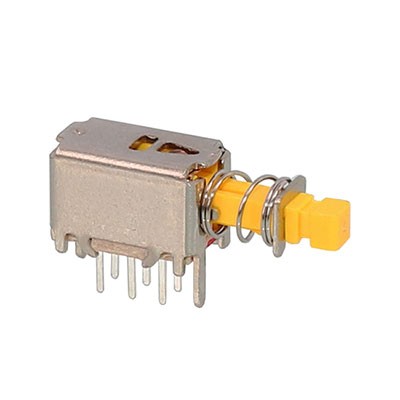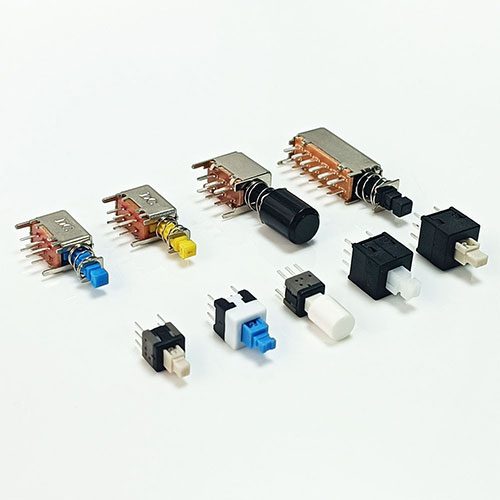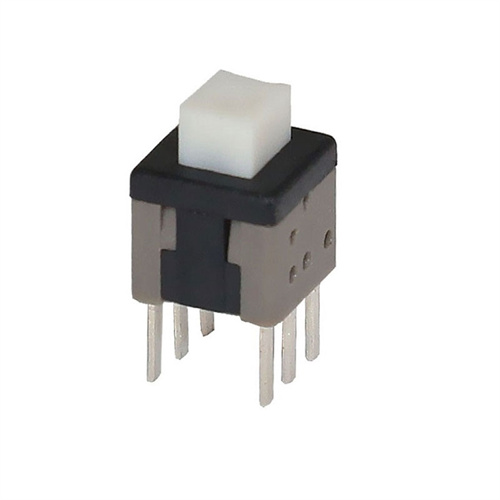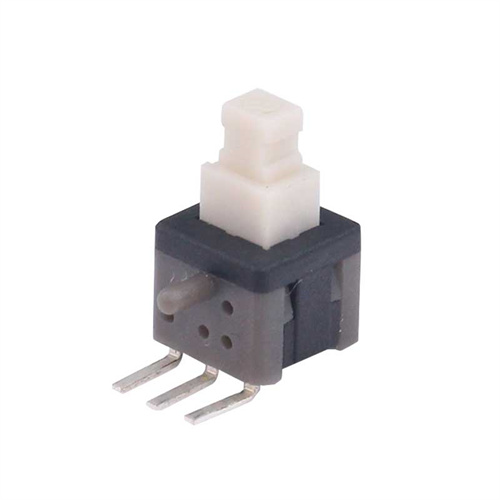Lock Right Angle Push Switch
A miniature latching push button switch is a type of switch that is commonly used in electronic devices.
The Lock Right Angle Push Switch is a specialized switching component that combines a locking mechanism with a space-saving right-angle design, making it a versatile choice for compact electronic systems. This switch is engineered to deliver both secure operation and efficient PCB integration, addressing key challenges in modern device design.
As the name suggests, the "lock" feature ensures the switch maintains its state (on or off) once actuated, similar to the self-locking mechanism in the Self-locking PCB mini Push Switch. This prevents unintended toggling, a critical trait in applications like industrial control panels or medical equipment where operational stability is paramount. Unlike momentary switches that reset when released, this locking function provides sustained control, enhancing safety and reliability in high-stakes environments.
The "right angle" design aligns it with the right angle PCB push button category, featuring terminals bent parallel to the switch body. This allows vertical mounting on PCBs, significantly reducing the horizontal space required compared to straight-terminal switches. This attribute is especially valuable in densely packed devices such as wearable tech, automotive dashboards, and IoT sensors, where every millimeter of space counts.
In terms of construction, the Lock Right Angle Push Switch often shares material similarities with its counterparts, utilizing durable thermoplastics or metal alloys to withstand soldering heat, mechanical stress, and environmental factors like dust or minor moisture. Its compact size—often comparable to the locking right angle mini push button switch—further expands its applicability in miniaturized electronics.
Whether used to activate safety protocols in industrial machinery or control functions in portable devices, this switch bridges the gap between secure locking functionality and space-efficient design. Its ability to integrate seamlessly with PCBs while ensuring consistent, reliable operation makes it a go-to component for engineers seeking both performance and practicality in their designs.
INQUIRY
CATEGORIES
LATEST NEWS
CONTACT US
Contact: Bella
Phone: 15999819066
E-mail: rucoe@rucoe.com
Whatsapp:+86-15999819066
Add: Taoyuan Street, Nanshan, Shenzhen






